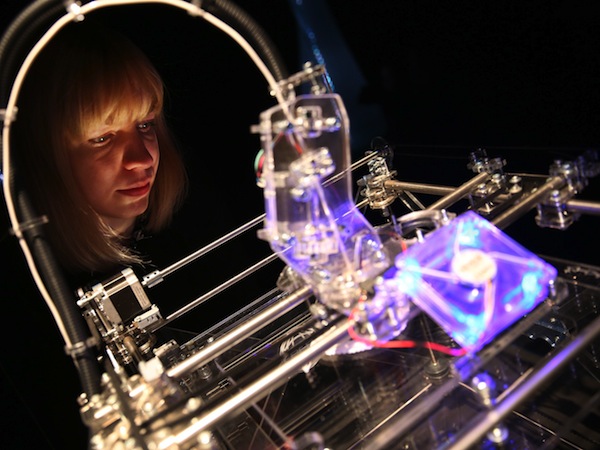The Great Divide: Doom, Gloom and/or A Hint of A Boom?

“Why airfreight a spare part from China when it can be printed when needed in one of the many decentralized, even backyard, factories that will soon be springing up in one’s neighborhood? Such a future will be one of rapidly rising “total factor” productivity or efficiency, as companies are able to economize both on tooling inputs and on raw-material inventories.” Sanford Rose
Dolors & Sense
By Sanford Rose

 KISSIMMEE Florida—(Weekly Hubris)—11/11/2013—Tired of reading bad news about the economy?
KISSIMMEE Florida—(Weekly Hubris)—11/11/2013—Tired of reading bad news about the economy?
Skip this column!
Or, rather, skip to the end of this column.
The short-term, or cyclical, outlook for the economy is not terribly buoyant. But the longer-term, or secular, outlook may be even more dispiriting.
Economic growth depends on two variables: increases in the labor force and increases in output per man hour. The news about both variables may not be very good.
The labor force is slated to grow anemically during the next 20 or so years.
The reasons: 1) The population is aging even as 2) labor-force participation rates among prime-age workers fall, and 3) the attractiveness of immigration decreases.
In short: fewer eligible workers and fewer participants among those eligible.
Remedy: lift still higher that Lamp beside the Golden Door. That is, let in more immigrants.
But there is a bit of a chicken-and-egg problem. Growth depends on immigrants, but immigrants won’t come unless the economy is growing.
If the number of hours worked cannot increase nearly as rapidly as it did in the past, can we improve efficiency enough to offset this relative shortfall?
Otherwise stated, what is the prognosis for improved productivity?
Herein resides the source of the Great Divide.
On one side are those who point out that productivity improvement has fallen sharply in the past three years and will likely continue to stagnate because of 1) declines in spending on basic research in both the governmental and private sectors, 2) a fixation on short-term stock-market returns on the part of corporate managers, which leads to lavishing money on stock buybacks rather than making efficiency-improving capital investments, and 3) an overall falloff in the pace of commercially applicable innovation.
On the other side are those who may accept points 1) and 2) but emphatically deny point 3).
Arrayed among these are the techno-economists who claim that, if anything, the pace of commercially viable innovations is speeding up.
In particular, in their view, the advent of 3-D printing, or additive production, which is in the process of localizing the manufacture of customized components, will enable the US to recapture some considerable part of the capacity lost to cheap Asian centers of production. Why airfreight a spare part from China when it can be printed when needed in one of the many decentralized, even backyard, factories that will soon be springing up in one’s neighborhood?
Such a future will be one of rapidly rising “total factor” productivity or efficiency, as companies are able to economize both on tooling inputs and on raw-material inventories.
Pollyannish reverie? One hopes not.
![]()
Note: The image used to illustrate this column derives from http://www.businessinsider.com/boeing-uses-3d-printers-for-airplane-parts-2013-6.
3 Comments
peter carroll
Sandy: I agree that digital printing/production could be an important stimulus. There are other interesting productivity-boosting innovations in the wings too. Check out LENR for example: it seems that Fleischman and Pons really were on to something. But I must quibble with one overly casual assumption that you made. Making the economy grow is important, but it is not the only important goal. You are very quick to advocate immigration as the cure for an aging population and a decline in workforce participation. I can point to several countries that have followed that policy advice and are now reaping a terrible cultural whirlwind. Perhaps a better policy, on balance, might be to reduce the insane le
S. Rose
Lest Peter lack the time to complete his comment, I add, based on his email, that he thinks appropriate changes in the tax code, regulatory environment and entitlement system will stimulate both enhanced productivity and increased labor-force participation. I cannot disagree. Nor can I disagree with the notion that output growth is not the universal solvent. But it sure is important.
S. Rose
At the risk of appearing canonical, I should add that short-term fiscal failures have worked to crimp the country’s long-term growth and employment outlook. A recent Federal Reserve study suggests that our inability to deal with unemployment and to absorb slack will penalize the country by about $1 trillion a year in forgone output for many years to come. In the name of sparing posterity increased debt, we have unwittingly picked its pocket.